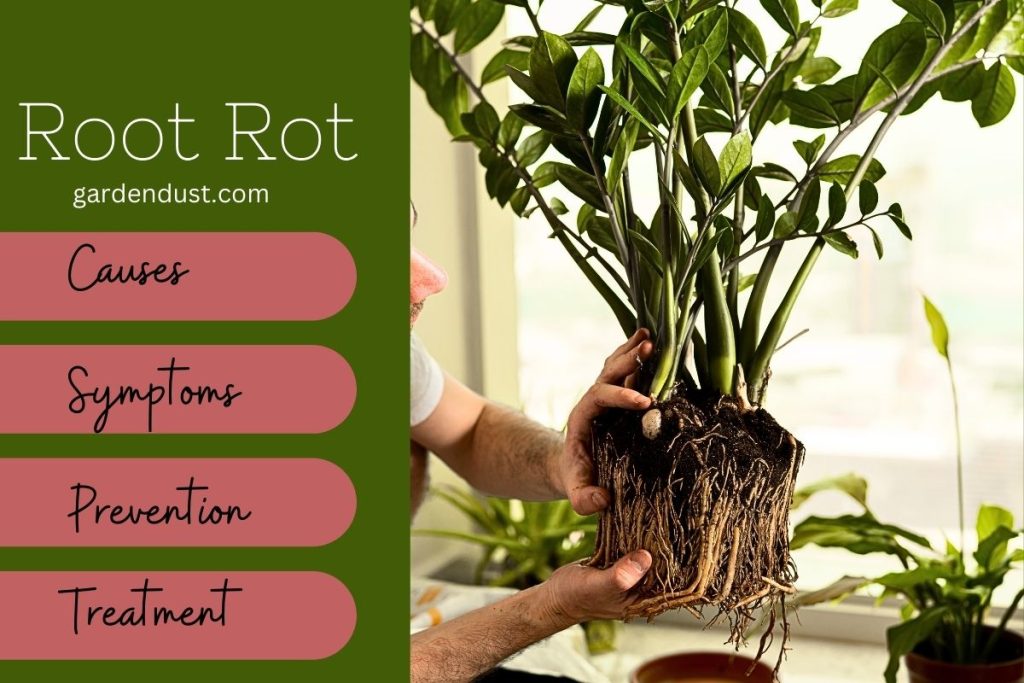What Is Root Rot ?
Root rot is a devastating plant disease caused by various types of fungi that attack and damage a plant’s root system. It is a common problem in both indoor and outdoor gardening, affecting a wide range of plant species. This article will delve into the causes, symptoms, prevention, and treatment of root rot, providing valuable insights to help gardeners and plant enthusiasts safeguard their plants against this destructive condition.
What are Causes of Root Rot?
Root rot is primarily caused by waterlogged soil and poor drainage. When the soil remains overly wet for extended periods, it creates an environment conducive to fungal growth. Some of the most common culprits behind root rot include species of the genera Phytophthora, Rhizoctonia, and Pythium. These fungi thrive in damp conditions, breaking down plant tissues and disrupting the plant’s ability to absorb water and nutrients.
Symptoms
Detecting root rot early is crucial for effective treatment. Here are some key symptoms to watch out for:
- Yellowing and Wilting Leaves: Infected plants often display yellowing or wilting of leaves, even if the soil seems adequately watered. This occurs because the damaged root system cannot supply sufficient nutrients to the leaves.
- Stunted Growth: Plants suffering from root rot experience slowed growth or fail to grow altogether due to the compromised root system’s inability to support proper development.
- Brown and Slimy Roots: Healthy roots are firm and white, while roots affected by root rot turn brown or black and become soft and slimy to the touch.
- Foul Odor: An unpleasant, musty odor emanating from the soil is a telltale sign of fungal activity associated with root rot.
Read Also:-5 Common Problems When Growing Foamflower and How to Solve Them
Prevention of Root Rot
Preventing root rot requires creating conditions that discourage fungal growth and support healthy root development:
- Good Drainage: Ensure proper drainage by using well-draining soil and pots with drainage holes. Elevate containers slightly to allow excess water to escape.
- Moderate Watering: Water plants when the top inch of soil feels dry, avoiding excessive watering that leads to waterlogged soil.
- Adequate Air Circulation: Space plants appropriately to allow air to circulate around their base, reducing humidity and discouraging fungal growth.
- Sanitation: Use sterile potting mix and clean gardening tools to minimize the risk of introducing fungi to your plants.
- Plant Selection: Choose plant species that are well-suited to your local climate and soil conditions to reduce the risk of waterlogged roots.
Treatment of Root Rot
If you suspect root rot, swift action is essential to save your plants. Here’s what you can do:
- Remove Infected Plants: Remove and dispose of infected plants to prevent the spread of the disease to healthy plants.
- Prune Affected Roots: Trim away damaged roots with clean, sharp tools. Disinfect the tools after each cut to prevent further contamination.
- Repot in Fresh Soil: Repot the plant in fresh, well-draining soil to give it a chance to recover. Choose a pot with proper drainage.
- Adjust Watering: Adjust your watering routine to prevent overwatering, allowing the soil to dry out between waterings.
- Use Fungicides: As a last resort, consider using fungicides labeled for root rot treatment. Follow the instructions carefully and only if other methods have been ineffective.
Final Thought
Root rot poses a significant threat to plant health and vitality, but with proper care and vigilance, it can be prevented and managed. By understanding the causes, recognizing the symptoms, implementing preventive measures, and taking prompt action when needed, gardeners and plant enthusiasts can ensure the longevity and beauty of their green companions. Remember, maintaining a well-balanced environment and practicing good gardening practices are key to keeping root rot at bay and enjoying thriving plants. Happy Gardening…







